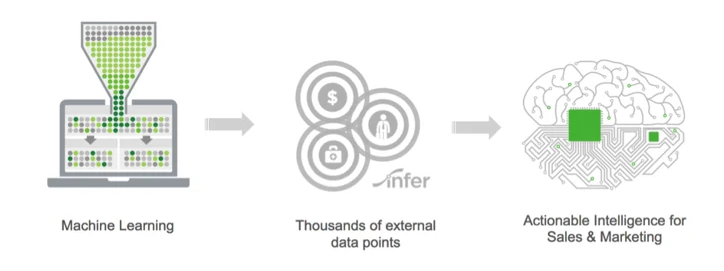Lead scoring is like a magic tool for sales teams. It helps them figure out which potential customers are worth their time. By giving points to different actions and traits, sales reps can see which leads are most likely to buy. This guide will teach you how to set up a lead scoring system, track important metrics, and use technology to make the process easier. Keep reading to learn how lead scoring can help you close deals faster and make your sales efforts more effective.
Key Takeaways
Lead scoring helps sales teams prioritize leads based on their likelihood to buy.
Setting up a lead scoring system involves establishing criteria, assigning point values, and using technology to automate the process.
Tracking key metrics like lead engagement, lead fit, and conversion rates is crucial for effective lead scoring.
Popular lead scoring software and CRM integration can streamline the scoring and prioritization process.
Regularly reviewing and adjusting lead scores ensures the system remains accurate and effective.
Understanding Lead Scoring
What is Lead Scoring?
Lead scoring is a method used to rank leads based on their potential value to your business. By assigning points to leads based on their actions and characteristics, you can prioritize the most promising prospects. For example, a software company might give higher scores to leads who visit the pricing page, request a demo, or work at a large company. Lower scores might go to those who only read a blog post or work at a small business.
The Importance of Lead Scoring in Sales
In today’s competitive market, sales teams need to work smarter, not harder. Lead scoring helps sales teams focus on the leads most likely to convert. By prioritizing high-quality leads, sales reps can:
Personalize outreach based on lead interests and behaviors
Engage leads at the right time with relevant messaging
Improve conversion rates and shorten the sales cycle
Lead scoring is essential for optimizing sales efforts and closing more deals.
How Lead Scoring Works
Lead scoring involves evaluating various factors such as demographics, behavior, and engagement with your company. When a lead interacts with your business, data is collected and analyzed. This data provides insights into the lead’s preferences, interests, and intentions. For instance, a lead who frequently opens emails, attends webinars, and downloads resources will likely have a higher score.
Key components of lead scoring include:
Demographic Information: Industry, job title, company size, and location.
Behavioral Data: Website visits, email engagement, and content downloads.
Engagement Level: Interactions with your brand, such as webinar attendance and survey participation.
By leveraging these factors, businesses can focus their efforts on the most promising prospects, ultimately leading to better outcomes and stronger customer relationships.
Setting Up a Lead Scoring System
Establishing Minimum Criteria for Qualified Leads
Before diving into lead scoring, it’s crucial to define the minimum threshold for what makes a lead qualified. This ensures your system prioritizes leads with the highest potential to convert, saving time and resources.
Assigning Point Values to Actions and Attributes
Assigning point values to each action and attribute is essential. For example, visiting a product page might be worth 10 points, while downloading a whitepaper could be worth 20 points. Similarly, a job title like “CEO” might be worth 30 points, while a title like “Intern” might be worth 5 points. Make sure the points reflect the likelihood of conversion.
Using Technology to Automate Scoring
Implementing a CRM system or lead management software can automate the scoring process. Tools like Popl can streamline lead capture and scoring, ensuring that no lead falls through the cracks. Popl’s integration capabilities with CRM platforms like Salesforce and HubSpot allow for seamless data transfer, reducing manual effort and the risk of errors.
Automated lead management systems allow team members to have a centralized system for tracking leads from start to finish, reducing the chances that leads will slip through the cracks.
Key Metrics for Effective Lead Scoring
Tracking Lead Engagement
Tracking lead engagement is crucial for understanding how actively leads interact with your brand. Key metrics provide insights into the effectiveness of your lead scoring strategies. Some important engagement metrics include:
Email Open Rates: Measures how often leads open your emails.
Click-Through Rates (CTR): Indicates how often leads click on links within your emails or ads.
Website Visits: Tracks the number of times leads visit your website.
Content Downloads: Measures how often leads download your resources, like eBooks or whitepapers.
Evaluating Lead Fit
Evaluating lead fit involves assessing how well a lead matches your ideal customer profile. This can be done by looking at both demographic and firmographic data. Important metrics include:
Job Title: Ensures the lead holds a position relevant to your product or service.
Company Size: Helps determine if the lead’s company is a good fit based on your target market.
Industry: Ensures the lead’s industry aligns with your offerings.
Geographic Location: Determines if the lead is in a region you serve.
Monitoring Conversion Rates
Monitoring conversion rates helps you understand how effective your lead scoring system is at turning leads into customers. Key conversion metrics include:
Lead-to-Customer Conversion Rate: Measures the percentage of leads that become paying customers.
Sales Cycle Length: Tracks the time it takes for a lead to move through the sales funnel and become a customer.
Upsell and Cross-Sell Rates: Indicates how often existing customers purchase additional products or services.
By focusing on these key metrics, you can optimize your lead scoring model and ensure your sales team prioritizes the most promising leads.
Leveraging Technology for Lead Scoring
Popular Lead Scoring Software
Using the right software can make a huge difference in your lead scoring efforts. Tools like HubSpot, Marketo, and Salesforce offer robust features to help you track and score leads effectively. Predictive lead scoring leverages machine learning and data analytics to predict a lead’s likelihood to convert. This method uses historical data and patterns to provide more accurate scores.
Integrating Lead Scoring with CRM
Integrating your lead scoring system with your CRM ensures that all your data is in one place. This integration helps in organizing and making the data actionable. For instance, when a lead’s score reaches a certain threshold, the CRM can automatically notify your sales team to follow up. This seamless integration reduces manual effort and ensures no lead falls through the cracks.
Automating Lead Prioritization
Automation is key to efficient lead management. By automating lead prioritization, you can ensure that your sales team focuses on the most promising leads first. This not only saves time but also increases the chances of conversion. Automated systems can track various lead behaviors, such as email opens, link clicks, and form submissions, to adjust scores in real-time.
Leveraging technology in lead scoring not only streamlines the process but also enhances accuracy, making your sales efforts more effective.
Best Practices for Lead Scoring

Creating an effective lead scoring model requires a strategic approach that incorporates best practices to ensure accuracy and relevance. Here are some key best practices to follow:
Aligning Sales and Marketing Teams
Ensure that both your sales and marketing teams are aligned on the objectives and criteria for lead scoring. This alignment helps create a cohesive strategy and avoids conflicts between teams. Establish a service-level agreement (SLA) that outlines the responsibilities and expectations for both teams in managing leads.
Regularly Reviewing and Adjusting Scores
Lead scoring is not a one-time activity. Continuously monitor the performance of your lead scoring model and make adjustments based on feedback and data analysis. Regularly review conversion rates, lead quality, and team feedback to identify areas for improvement.
Personalizing Outreach Based on Scores
Use the lead scores to tailor your outreach efforts. Personalized communication can significantly increase engagement and conversion rates. By understanding a lead’s score, you can customize your messaging to address their specific needs and interests.
By aligning marketing and sales, businesses can create a strong foundation for success. Regular reviews and personalized outreach ensure that the lead scoring model remains effective and relevant.
Case Studies and Success Stories

Successful Implementation of Lead Scoring
Consider a real-life example: a study by MarketingSherpa found that companies using lead scoring experience a 77% increase in lead generation ROI over those that don’t. One such company, Veloxy, implemented a lead scoring system and saw remarkable results. By assigning point values to different customer actions and attributes, they were able to prioritize leads more effectively. This led to a 50% increase in qualified leads and a significant boost in sales productivity.
Impact on Sales Efficiency
Another success story comes from Hoosier Security. After adopting a lead scoring system, they could track where their leads were coming from and optimize their sales funnel. Within a few months, they saw a 50% increase in qualified leads and a 28% improvement in website performance. This not only enhanced their sales efficiency but also reduced their cost per conversion by nearly 50%.
Lessons Learned from Real-World Examples
From these case studies, several key lessons emerge:
Prioritize High-Value Leads: Focus on leads that show the most promise based on their actions and attributes.
Optimize Sales Funnels: Continuously track and refine your sales funnel to improve lead conversion rates.
Leverage Technology: Use automated systems to handle large volumes of data and streamline the lead scoring process.
By leveraging lead scoring, companies can significantly improve their sales efficiency and close deals faster. The key is to continuously review and adjust your scoring criteria to align with your business goals.
Challenges and Solutions in Lead Scoring
Common Pitfalls to Avoid
Lead scoring can be tricky, and there are several common pitfalls to watch out for. One major issue is overcomplicating the scoring model. When the model is too complex, it becomes hard to manage and understand. Another pitfall is not aligning the scoring criteria with your sales and marketing goals. This misalignment can lead to wasted efforts and missed opportunities.
Overcoming Data Quality Issues
Data quality is crucial for effective lead scoring. Inaccurate or incomplete data can lead to poor scoring and missed opportunities. To overcome this, ensure that your data is regularly cleaned and updated. Use automated tools to help maintain data quality and consistency. Additionally, make sure to validate the data sources to ensure they are reliable.
Ensuring Team Adoption and Training
For a lead scoring system to be successful, your team needs to adopt and understand it. Regular training sessions can help keep everyone on the same page. It’s also important to gather feedback from the team and make adjustments as needed. This ensures that the system remains effective and relevant.
Lead scoring is an ongoing process that requires continuous assessment and refinement to stay effective.
Lead scoring can be tricky, but there are ways to make it easier. By using the right tools and strategies, you can turn challenges into opportunities. Want to learn more? Visit our website for tips and solutions that can help your business grow.
Conclusion
Lead scoring is a game-changer for any sales team looking to boost their efficiency and close deals faster. By prioritizing leads based on their likelihood to convert, sales reps can focus their efforts on the most promising prospects. This not only saves time but also increases the chances of making a sale. With the right lead scoring system in place, your team can streamline their workflow, personalize their outreach, and ultimately drive better results. So, if you haven’t already, it’s time to embrace lead scoring and watch your sales soar.
Frequently Asked Questions
What is lead scoring?
Lead scoring is a way to rank potential customers based on their likelihood to buy. It assigns points to leads based on their actions and characteristics, helping sales teams focus on the most promising prospects.
Why is lead scoring important for sales?
Lead scoring helps sales teams prioritize their efforts on leads that are more likely to convert. This means they can spend their time more efficiently and close deals faster.
How does lead scoring work?
Lead scoring works by assigning points to different actions and attributes of a lead. For example, visiting a pricing page might earn more points than just opening an email. The total score helps determine how ready a lead is to buy.
What are some common actions that earn points in lead scoring?
Common actions that earn points include visiting important pages on your website, downloading resources like whitepapers, attending webinars, and filling out contact forms.
Can lead scoring be automated?
Yes, lead scoring can be automated using software tools. These tools can track and analyze lead behavior, automatically assigning scores based on predefined criteria.
How often should lead scoring criteria be reviewed and updated?
Lead scoring criteria should be reviewed and updated regularly to ensure they remain accurate. This can be done quarterly or whenever there are significant changes in your sales process or market conditions.










